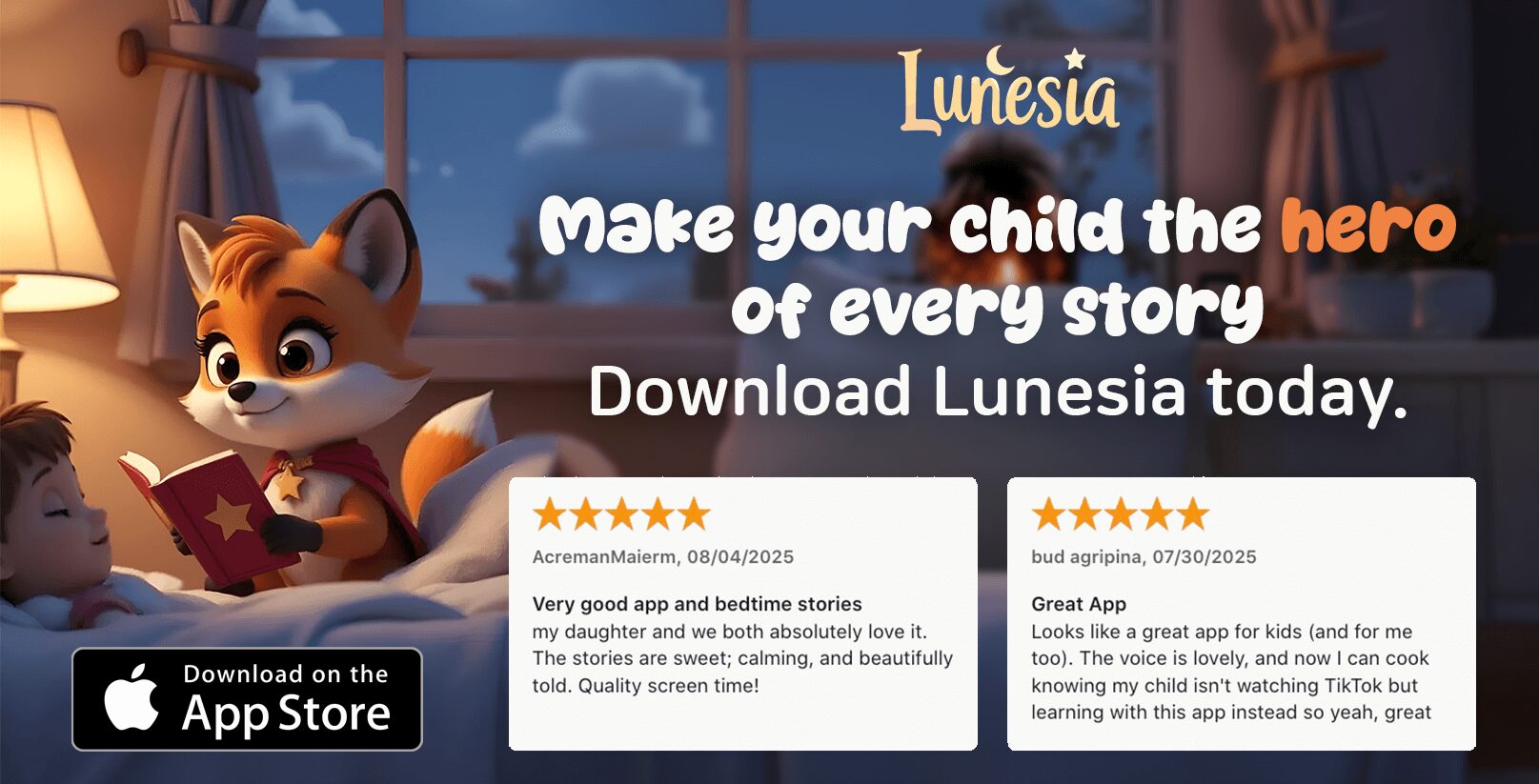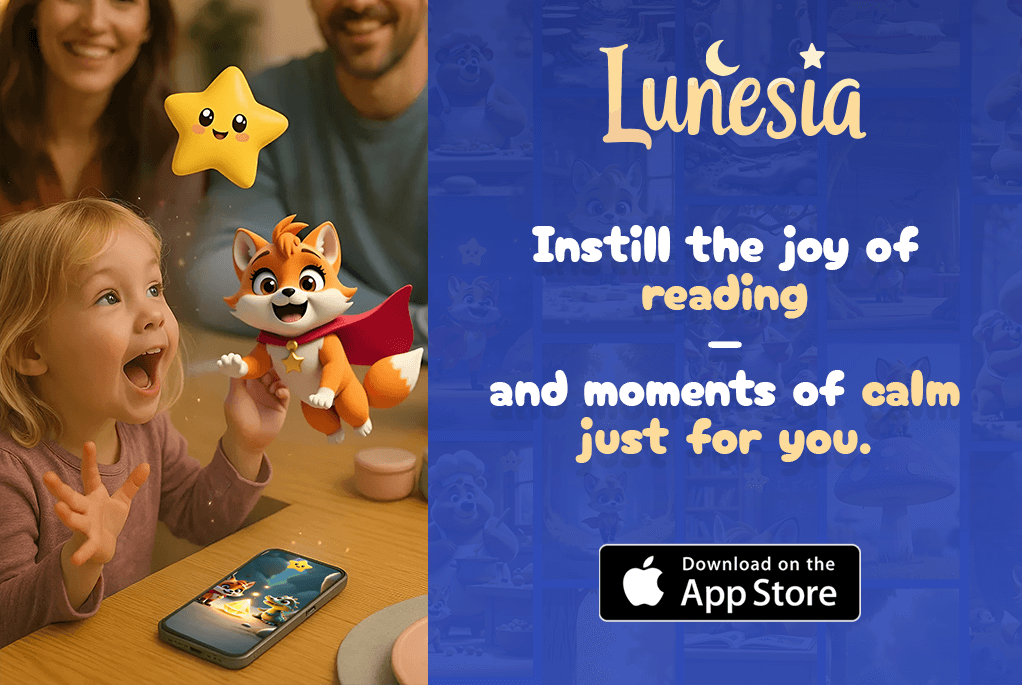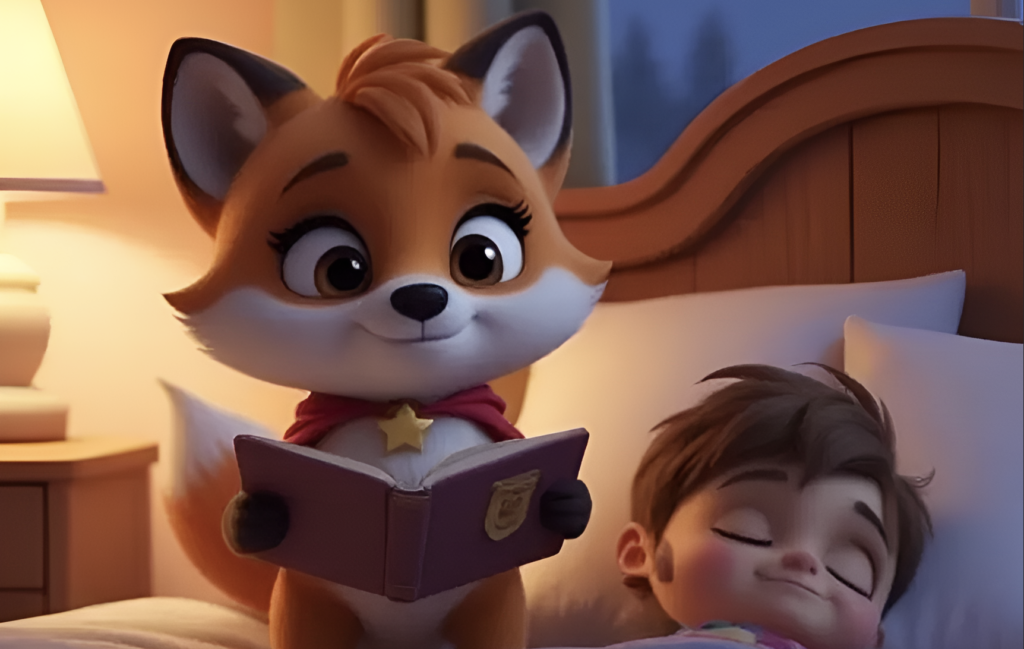As a mom and early childhood educator, I’ve seen firsthand the impact of screen time on young children. The American Academy of Pediatrics recommends limiting screen time to an hour a day, but it’s not just about the quantity – it’s about the quality. With so many apps available, it can be overwhelming to choose the right one for your toddler.
I understand the challenge of finding educational content that balances entertainment with learning value. That’s why I’ve personally tested dozens of apps with my own children, and I’m excited to share my findings with you. In this comparison, we’ll explore the top contenders, including Lunesia, and help you make an informed decision about the best way to support your child’s learning journey.
Let’s dive into the world of screen time and discover how to make it a positive experience for your child.
Why Story Apps Matter for Toddler Development
As a parent, I’ve come to realize the significant impact story apps can have on a toddler’s development. In today’s digital landscape, it’s essential to understand how these apps can support learning and growth.
Benefits of Interactive Storytelling for 2-Year-Olds
Interactive storytelling through apps can be a powerful tool for toddlers. By engaging with stories, children can develop their language skills, imagination, and creativity. The best story apps for toddlers are designed to be interactive rather than passive, encouraging your child to touch, respond, and engage with the content in ways that support learning.
For instance, many story apps include features like touch-and-respond activities that help children develop their fine motor skills while enhancing their storytelling experience. By choosing apps that offer meaningful educational value, parents can ensure that screen time is being used effectively.
Balancing Screen Time with Educational Value
Finding the right balance with screen time is a concern for most parents. The American Academy of Pediatrics recommends limiting screen time to just one hour per day for 2-year-olds, making it essential that the apps we choose offer meaningful educational value. I’ve found that treating story apps as tools for learning rather than digital babysitters helps us make better choices about when and how to use them.
When selecting apps for my own children, I prioritize those that extend learning beyond the screen. The best ones inspire imaginative play, conversation, and real-world connections after the device is turned off. For more insights on story apps for preschoolers, you can visit https://lunesia.app/story-apps-for-preschoolers/.
By being mindful of the apps we choose and ensuring they align with our parenting values, we can create a healthy balance between screen time and other activities that support our child’s overall development.
Screen Time Guidelines for Toddlers
Understanding screen time guidelines for toddlers is crucial for parents who want to ensure their child’s digital experience is both fun and educational. As a parent, it’s natural to have concerns about the impact of screen time on your child’s development.
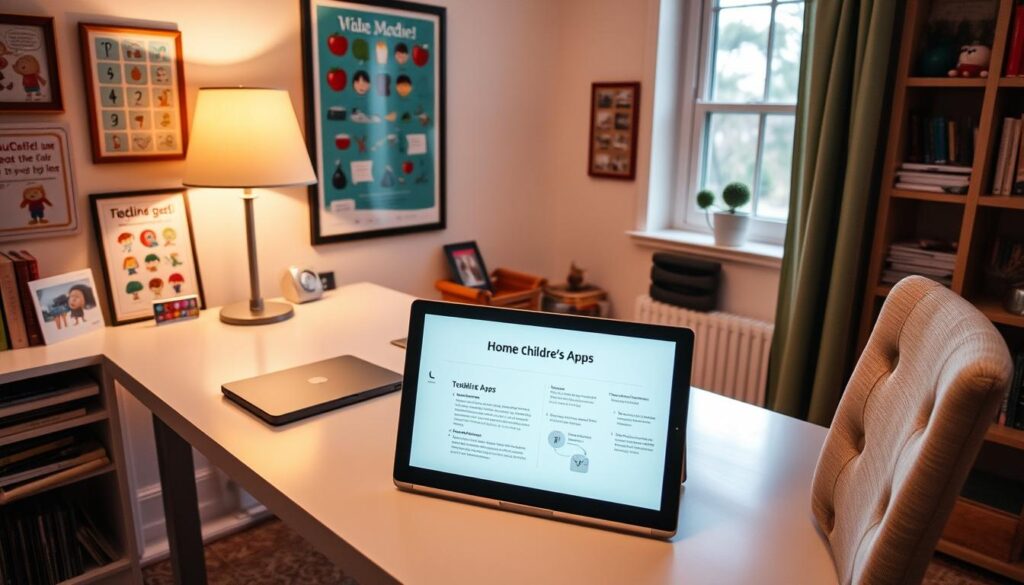
American Academy of Pediatrics Recommendations
The American Academy of Pediatrics (AAP) provides valuable insights into managing screen time for toddlers. According to the AAP, children under 2 years old should have some screen time, but it should be limited and focused on high-quality educational content. For children aged 2-5, the AAP recommends limiting screen time to 1 hour per day of high-quality educational programming. Co-viewing with parents is also encouraged to help children understand what they’re watching.
“Children’s exposure to digital media should be balanced with other activities that promote cognitive, social, and physical development.”
Creating Healthy Digital Habits Early
Establishing healthy digital habits from an early age is key to promoting a positive relationship between your toddler and digital technology. This includes setting limits on screen time, ensuring it’s used for educational purposes, and encouraging physical activity and social interaction. By doing so, you’re helping your child develop a balanced approach to technology.
Using Guided Access to Control App Usage
One effective way to manage your toddler’s app usage is by using Guided Access on Apple devices or similar features on Android. This feature allows you to “lock” your child into a specific app, preventing accidental navigation to other apps or inappropriate content. To set up Guided Access, go to Settings > Accessibility > Guided Access, turn it on, and set a passcode. Then, when you’re in the app you want your child to use, triple-click the home or side button to activate Guided Access. This simple feature has been a game-changer for many parents, providing peace of mind and helping toddlers focus on the content without distractions.
By implementing these strategies, you can create a safe and beneficial digital environment for your toddler, ensuring that their screen time is both enjoyable and educational.
Best Story App for 2-Year-Olds: Key Features to Look For
When searching for the best story app for your 2-year-old, several key features can make all the difference in their learning and entertainment experience. As a parent, it’s essential to evaluate these features to ensure the app is both fun and educational for your child.
Age-Appropriate Content and Interface
The best story apps for 2-year-olds should have an interface that’s easy for them to navigate. This means intuitive controls and simple, clear graphics. The content should also be age-appropriate, featuring stories and activities that are relevant to their daily lives and interests.
For instance, an app that offers a variety of stories with relatable characters can keep your child engaged. The interface should be designed in a way that minimizes frustration, allowing your child to explore independently.
Educational Value vs. Entertainment
A good story app should strike a balance between education and entertainment. While it’s essential for the app to be fun, it should also provide learning opportunities. Look for apps that incorporate skills like reading, counting, and problem-solving in an engaging way.
Some apps achieve this by using interactive stories that teach moral lessons or promote cognitive development. This not only keeps your child entertained but also contributes to their educational growth.
Ad-Free and Safe Environment
Safety is paramount when it comes to apps for young children. An ad-free environment is crucial to prevent exposure to inappropriate content or accidental purchases. I always recommend opting for apps that offer a safe and controlled space for your child to play and learn.
To ensure safety, look for apps from reputable developers that have clear privacy policies. Some apps even offer a completely contained environment, restricting access to external links or social media features, thereby protecting your child’s online safety.
By considering these key features, you can choose a story app that is not only enjoyable for your 2-year-old but also safe and educational. Remember, the right app can be a valuable tool in your child’s learning journey, making it worth investing in a quality app that meets your child’s needs.
Lunesia: The Ultimate Story App for Toddlers
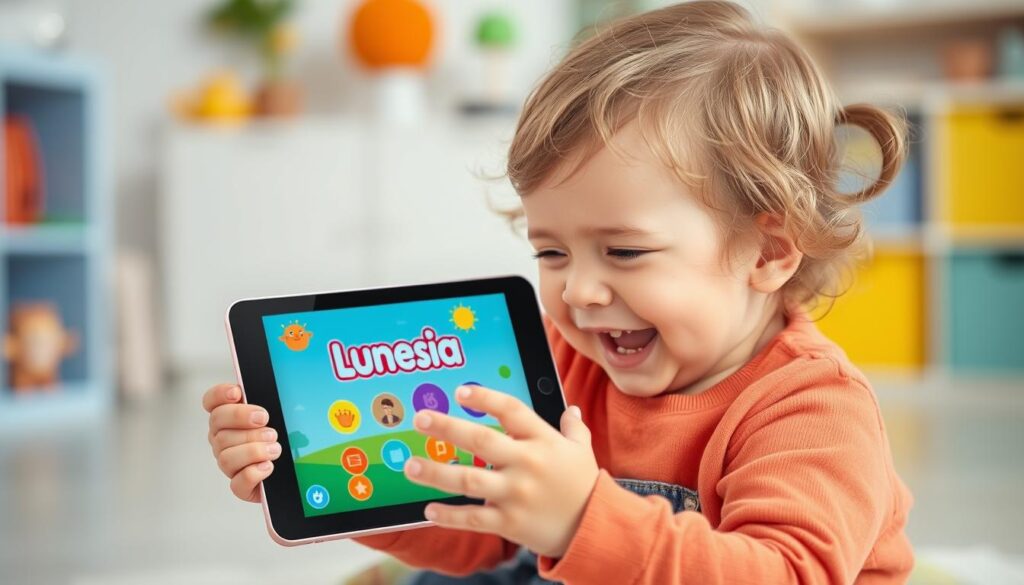
As a parent, you’re constantly seeking the best tools to support your child’s development, and that’s where Lunesia comes in. Lunesia is designed to provide a comprehensive and engaging experience for toddlers, combining education and entertainment in a way that’s both fun and informative.
Key Features and Benefits
Lunesia offers a range of features that make it an ideal choice for parents. The app includes robust parent controls, allowing you to customize the experience based on your child’s specific needs and your family’s screen time preferences. With built-in timer features, you can manage your child’s screen time effectively, ensuring a healthy balance between digital engagement and other activities.
One of the standout features of Lunesia is its ability to create personalized profiles for different children, tracking progress and preferences separately. This feature is particularly useful for families with multiple children, as it allows you to tailor the experience to each child’s unique needs.
Educational Approach and Content
Lunesia’s educational approach is centered around interactive storytelling, providing a wealth of engaging content that’s both entertaining and informative. The app offers a range of stories that cater to different interests and developmental goals, ensuring that your child stays engaged and motivated.
Parent Controls and Customization
As a parent, you’ll appreciate the level of control Lunesia offers. You can customize the content selection to align with your child’s current interests or developmental goals. Additionally, Lunesia provides simple progress reports, giving you visibility into what your child is learning and how they’re progressing.
For families concerned about screen time, Lunesia offers helpful suggestions for extending the learning beyond the app, through related activities, questions to discuss, or real-world connections to explore. This approach helps to create a more comprehensive learning experience that goes beyond the digital realm.
Top Competitors in the Toddler Story App Market
The market for toddler story apps is diverse, with several notable players competing for parents’ attention. As a parent, you’re likely looking for the best app to support your child’s development. Let’s explore some of the top competitors in this space.
Pok Pok Playroom
Pok Pok Playroom is a popular app designed for toddlers, offering a range of interactive games and activities that promote learning through play. The app features a simple, intuitive interface that’s easy for little ones to navigate.
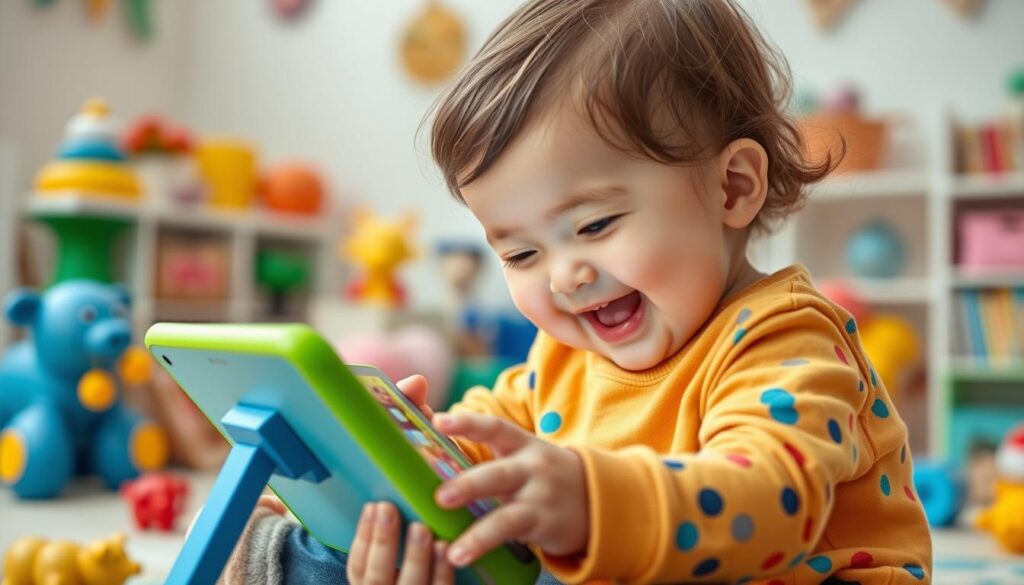
Khan Academy Kids
Khan Academy Kids is a well-known educational app that offers a comprehensive learning experience for toddlers. With a focus on subjects like math, science, and reading, this app provides a solid foundation for young learners.
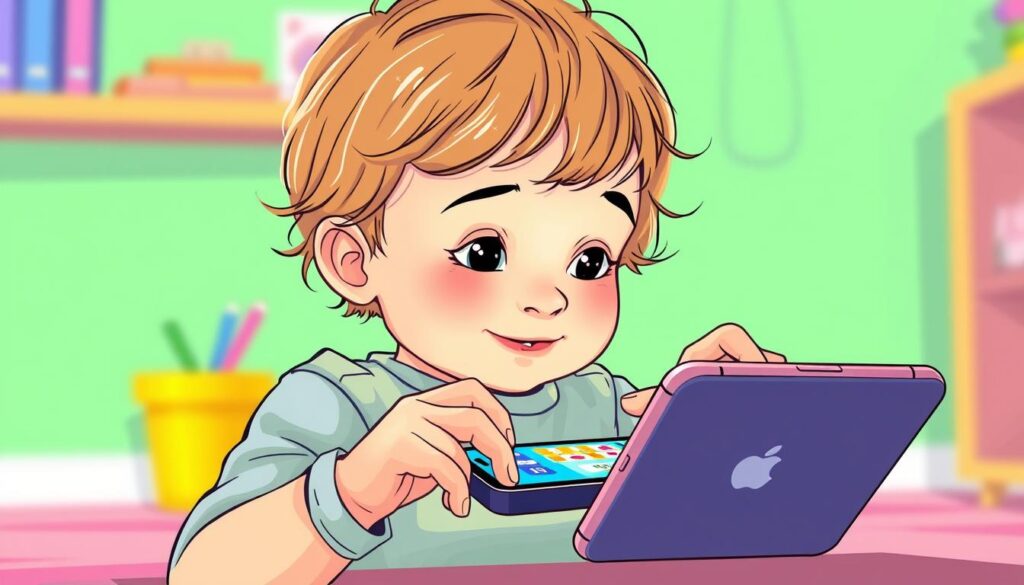
Sago Mini World
Sago Mini World is a delightful app that offers a collection of interactive games and activities designed to spark creativity and imagination in toddlers. The app’s colorful, child-friendly interface makes it a joy to explore.
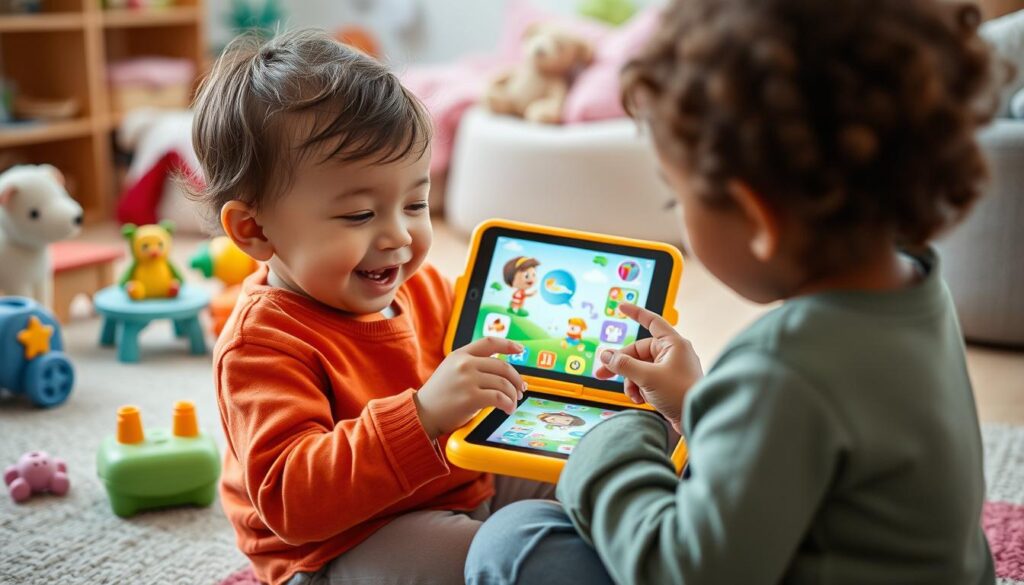
PBS Kids Games
PBS Kids Games is a trusted brand that offers a range of educational games and activities suitable for toddlers. The app features popular characters from PBS Kids shows, making learning fun and engaging.
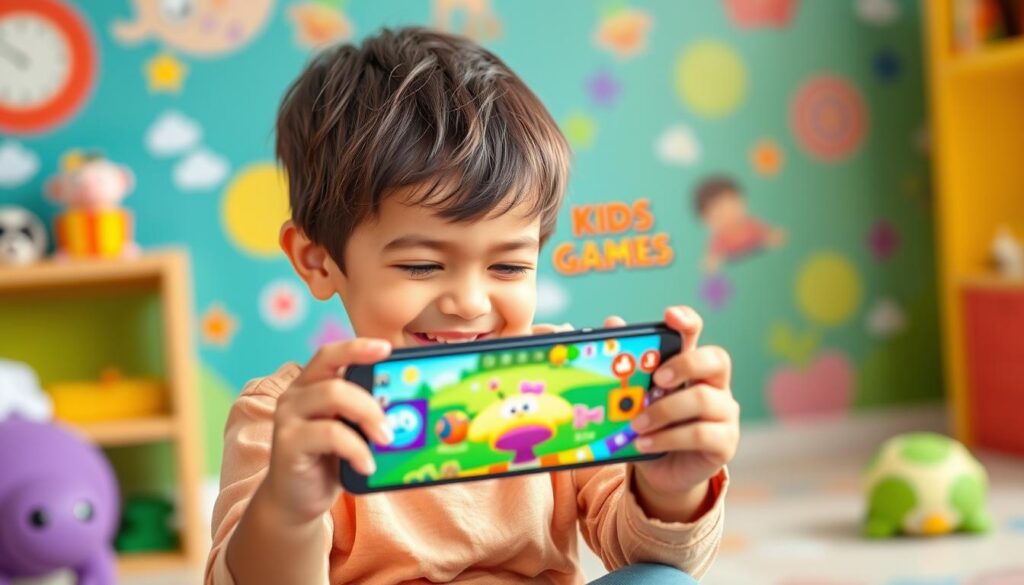
Lingokids
Lingokids is a comprehensive early learning platform that offers over 1,600 activities, including games, songs, and interactive lessons. This app is designed to make learning fun and engaging for toddlers, with a focus on key areas like language, math, and creativity. With a colorful, child-friendly interface, Lingokids keeps little ones engaged while promoting learning through play.
Lingokids offers a subscription-based model, priced at $5.99 per month with an annual subscription, or $13.49 monthly without a subscription. While it sits in the premium app category, the sheer volume of content and variety of activities make it a valuable resource for parents seeking quality educational content.
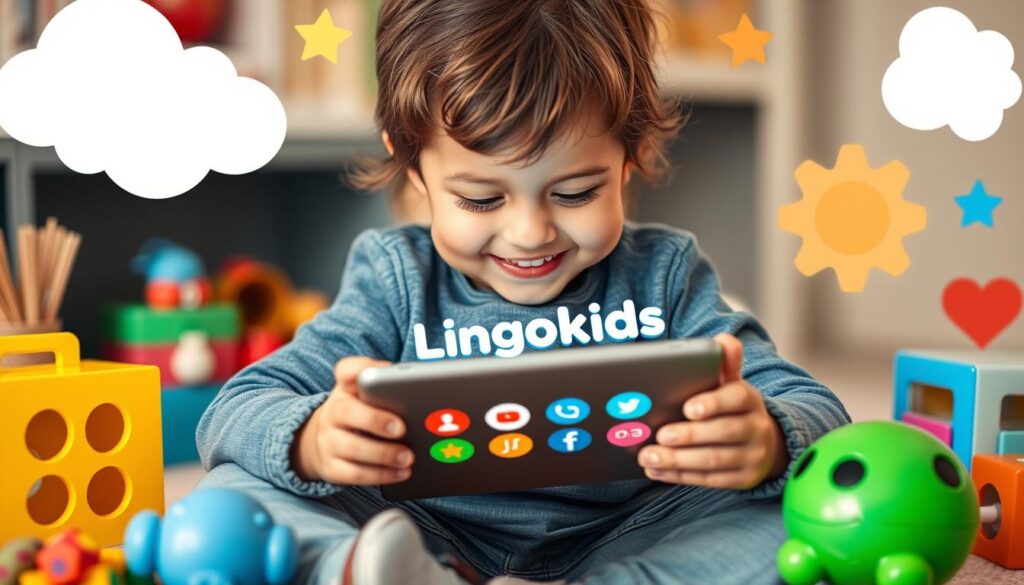
Head-to-Head Comparison: Lunesia vs. Top Competitors
Let’s dive into a head-to-head comparison of Lunesia and its top competitors in the toddler story app market. This comparison will help you understand which app offers the best value for your child.
Content Quality and Variety
Lunesia stands out for its high-quality, age-appropriate content tailored specifically for 2-year-olds. While competitors like Khan Academy Kids and PBS Kids Games offer a wide range of content, Lunesia focuses on story-based experiences that are both entertaining and educational.
For instance, Lunesia’s library includes a diverse selection of stories that cater to different interests and developmental needs. In contrast, apps like Lingokids offer a broader range of activities beyond storytelling.
User Experience for Both Children and Parents
The user experience is crucial for both children and parents. Lunesia provides an intuitive interface that is easy for toddlers to navigate, while parents appreciate the ad-free and safe environment. Competitors like Sago Mini World also offer engaging experiences, but some require more parental involvement to navigate.
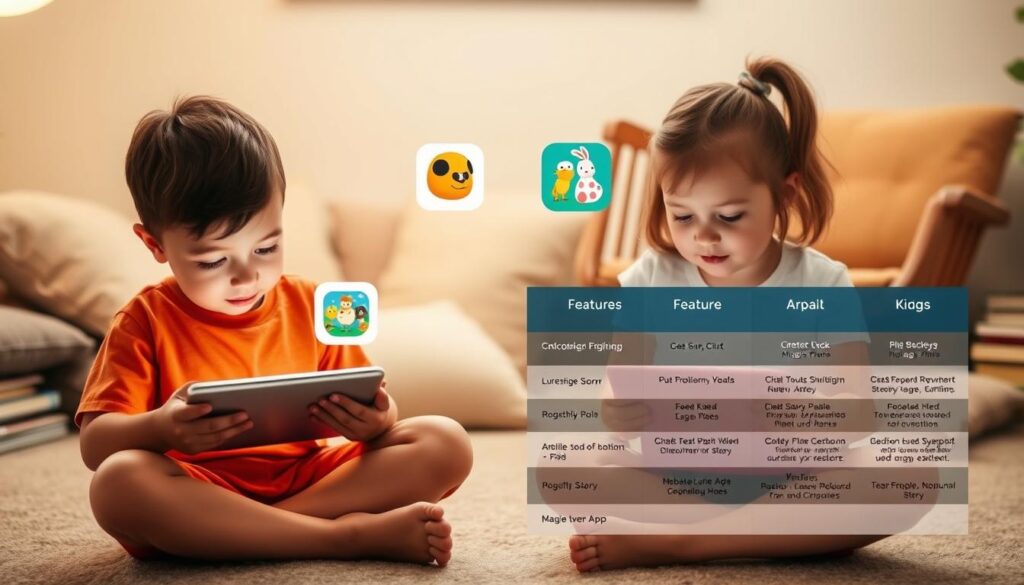
Value for Money
When evaluating the value for money, it’s clear that free apps like Khan Academy Kids and PBS Kids Games offer extensive content without a direct cost. However, Lunesia’s focused approach to storytelling for 2-year-olds provides a unique value proposition for parents seeking specialized content.
| App | Cost | Content Focus |
|---|---|---|
| Lunesia | Paid | Story-based experiences for 2-year-olds |
| Khan Academy Kids | Free | Broad educational content |
| Lingokids | $5.99-$13.49/month | Wide range of activities for various ages |
Many of these apps offer free trials, which I highly recommend taking advantage of before committing to a subscription. This hands-on testing is the best way to determine which app truly resonates with your child and provides the best value for your time and money.
Conclusion: Choosing the Right Story App for Your 2-Year-Old
With numerous story apps available, deciding on the most suitable one for your toddler can be challenging. The American Academy of Pediatrics recommends no more than one hour of screen time per day for children aged 2-5, emphasizing the need for interactive and educational content.
After comparing Lunesia with top competitors, it’s clear that the “best” app depends on your priorities and your child’s preferences. For narrative-focused experiences, Lunesia offers a specialized approach. For budget-friendly options, Khan Academy Kids and PBS Kids Games provide high-quality educational content.
Remember to maintain reasonable screen time limits and engage with your child during app usage to strengthen learning. A balanced approach might involve combining a story-focused app like Lunesia with an open-ended option like Pok Pok Playroom. Ultimately, digital experiences should complement hands-on play, reading, and exploration.
FAQ
Are educational apps like Lunesia suitable for my toddler’s daily routine?
Yes, educational apps can be a great addition to your toddler’s daily routine, providing a fun and engaging way to learn new skills. However, it’s essential to balance screen time with other activities, such as outdoor play and reading, to ensure a healthy and well-rounded experience.
How do I know if a toddler app is safe for my child to use?
Look for apps that are ad-free, have a simple and intuitive interface, and offer a safe environment for your child to explore. You can also check the app’s ratings and reviews from other parents to get an idea of its safety and effectiveness.
Can apps like PBS Kids Games and Sago Mini World really help my child develop important skills?
Absolutely! Many toddler apps, including PBS Kids Games and Sago Mini World, are designed to promote learning and development in areas like problem-solving, literacy, and numeracy. By using these apps, your child can develop essential skills while having fun.
How can I control the amount of time my toddler spends on educational apps?
You can use features like Guided Access on your device to limit your child’s access to specific apps and set time limits. Additionally, many apps, including Lunesia, offer parent controls that allow you to customize your child’s experience and monitor their usage.
Are there any guidelines for screen time in toddlers that I should be aware of?
Yes, the American Academy of Pediatrics recommends that children aged 2 years and older limit their screen time to 1 hour per day of high-quality educational content. It’s also essential to co-view with your child and engage in conversations about what they’re watching or playing.
What are some other activities I can do with my toddler to supplement their learning?
There are many fun and engaging activities you can do with your toddler, such as reading books, singing songs, and playing puzzles. You can also try activities like peek-a-boo, animal matching games, and sensory play to promote learning and development.

